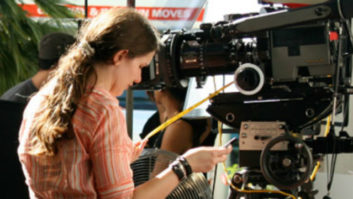After the BBC was forced to apologise for running an out-of-date clip of Boris Johnson laying a wreath at the Cenotaph on its breakfast programme yesterday morning, ‘wreathgate’ quickly began trending on Twitter.
The broadcaster said a “production error” led to the programme showing a clip from 2016 instead of Sunday’s ceremony.
BBC Breakfast editor Richard Frediani took to Twitter to explain that the 2016 footage from the archive had been restored to the BBC’s system early on Sunday morning in order to preview the Remembrance Sunday service.

According to former Sky News studio director Rod Fairweather, it was an easy mistake to make, particularly in the high-pressure setting of a live news programme: “The complication comes about organising currently in-use material. Clips may be marked up in a way that doesn’t necessarily headline the date, so producers selecting clips into an edit may just see the name of a politician laying a wreath at the Cenotaph, and put it on the timeline,” he tells TVBEurope.
“Should it have happened? No. There were enough clues for experienced news producers and editors (if they were different people) to spot the wrong politicians around him, changed haircuts etc. However, newsrooms are run tight. You don’t have lots of people hanging around, waiting to check every shot used. Often the journalists will now be doing their own editing, again reducing the number of people looking at material.”
“We also have teams working through the night, and, like it or not, human performance at 4 in the morning is not what it is in the middle of the day,” continues Fairweather.
So, how can newsrooms stop this kind of error from happening? The correct metadata tagging in their MAM system is of the upmost importance says Neil Stobart, VP, Global Systems Engineering at Cloudian: “Your content is only as good as the metadata that’s been added to it, and in fast-moving situations like a developing news story, journalists need fast access to material, so the more identifiable it is, the easier it is for them to find the right thing.”
According to Tracie Mitchell, media technology consultant and director at Blue Lucy, the asset management system should be able to flag this kind of error in order to stop it happening. “The systems we’ve implemented for similar newsrooms have included a red, amber and green traffic light system to help control which footage ends up in which news packages and on which platforms,” she explains. “In particular, historical footage should include a red alert to identify the material as archival.”
AI could have a role to play to prevent this sort of mishap in the future says Nik Forman, director of marketing and partnerships, Masstech Innovations: “There may be cognitive facial recognition services that are smart enough to tell if a clip contains 2016-vintage Boris as opposed to the 2019 version. Likewise speech-to-text services can convert audio narration to searchable text metadata – in this particular example the clip could be identified as being from 2016 by reference to Johnson as foreign secretary, for example.”







